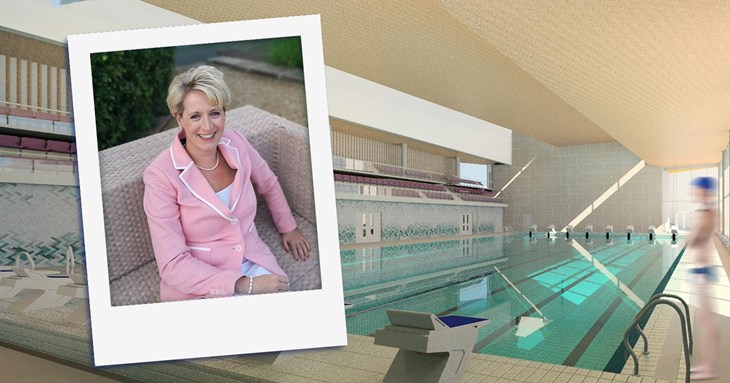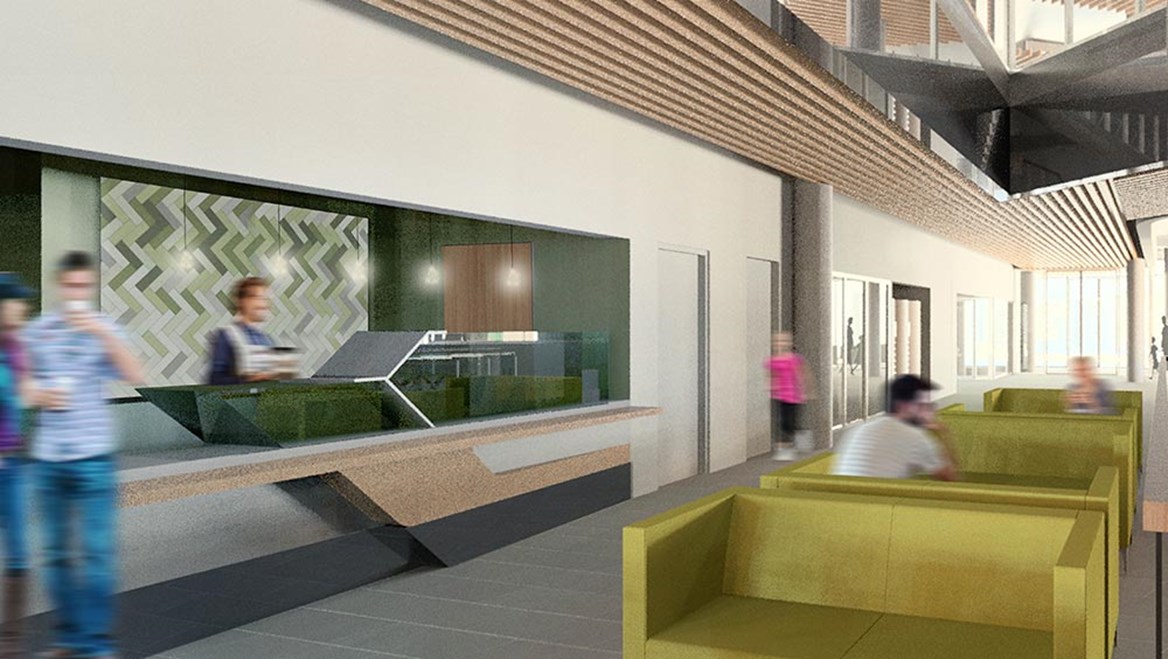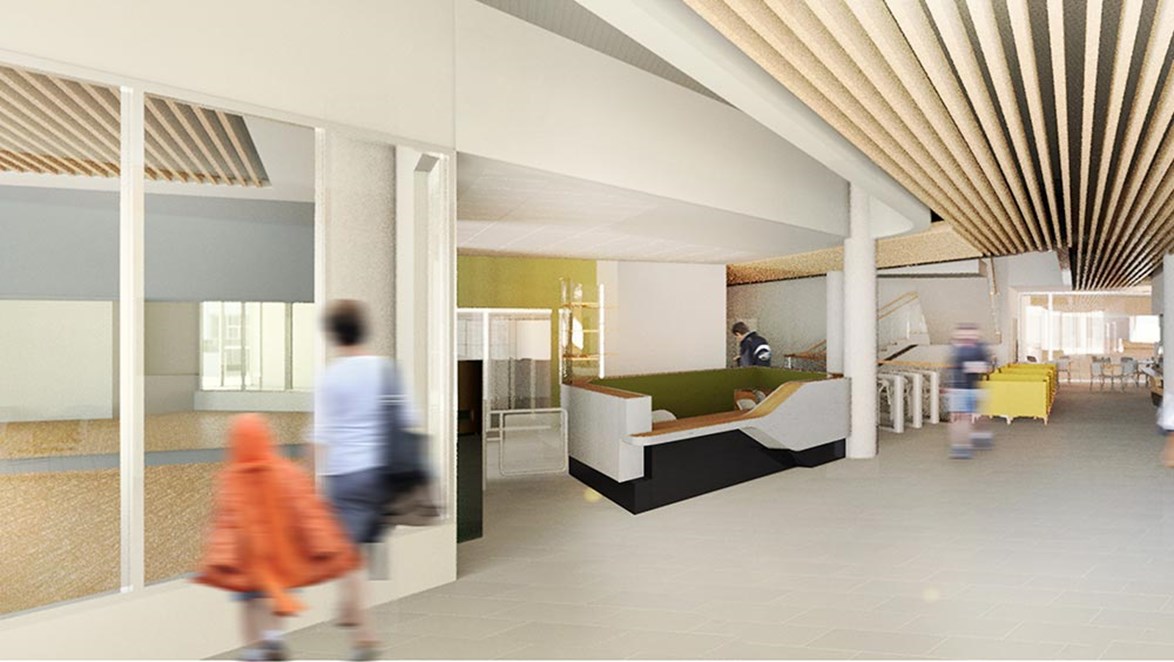Why Exeter is a leading UK city for building design
Published: 26 January 2021

Emma Osmundsen is the managing director of Exeter City Living, the development arm of Exeter City Council, and a passionate advocate of Passivhaus design.
St Sidwell’s Point, the rapidly emerging new leisure complex in the city centre funded by the City Council, was recently featured in a keynote case study at the UK Passivhaus Conference. Here, Emma shares her ambitions for Passivhaus design in the UK – and why Exeter is at the forefront of bringing about change within the construction industry.
“Walk past one and you may not notice it is one, walk inside one and you will definitely know it is one – a Passivhaus building.
A quiet revolution is taking place across our streets in the UK, with over 1,300 buildings now built to Passivhaus standard, with the benefits of delivering ultra-low energy efficient buildings being felt by many.
And felt is indeed the right word – as Passivhaus by its very definition is providing thermal comfort for its occupants. Bo Adamson and Wolfgang Feist developed the Passivahus standard in the early 1980s, a set of principles that creates a consistent and comfortable ambient temperature, circa 20C which can be maintained with little to no heating or cooling.
Passivhaus design, is sometimes referred to as a ‘fabric first’ approach, where the building and the people within it do the work and fuel it. Built to an exacting quality assurance standard, a building must have accurate design modelling, high levels of insulation, high performing windows, have a mechanical ventilation system with highly efficient heat recovery and with ‘thermal bridge free’ construction.
These guiding principles are exactly what attracted me to Passivhaus design back in 2008, when I was looking to provide housing solutions in response to fuel poverty that was a very real issue for some within our city.
As a chartered surveyor by profession, I am wired to fix problems, and through research that we carried out at the council, Passivhaus buildings seemed the logical way to go – energy efficient, value for money over the longer terms and comfort for occupants. 12 years later, the success of this approach is apparent, with one of our residents regularly attesting to the fact she has never turned her heat on since she moved in.

We started off building three Passivhaus homes and over the past decade we have steadily continued to build in this way, we know it works and as a result we now have a pipeline to deliver 1,000 Passivhaus homes over the next five years. This all supports Liveable Exeter, the council’s ambitions to deliver transformational change and sustainable growth by 2040. I am proud to be a part of a team, and a council, that is determined to drive change for the benefit of its people, and the planet.
And that’s why we are building a UK first – St Sidwell’s Point – a leisure centre built to Passivhaus standards. Years in the planning, we are now only months away from it opening to the public. This project required a shared vision from all involved. Our architect set the bar, with a stunning design and the space cleverly designed to serve the needs of its users.
Our contractor was responsible for turning our vision into a reality and that’s where the Kier team has truly become an extension of our team. They have taken the time to understand our goals, not just on this project but for our city, they have listened and upskilled, both themselves and their supply chain partners to support the delivery of this project.
Over the course of the project, they have created job and training opportunities for the people of Exeter and also held careers events and hosted tours to showcase what we are achieving at St Sidwell’s Point, in turn they have become an important advocate for sharing the message about the benefits of Passivhaus design.
The doors to St Sidwell’s Point will open to the Exeter community this summer with facilities galore, including a main swimming pool and learner pool with moveable floors, a confidence pool for young children, a spectator area as well as a gym, health suite, spa facilities, café and soft play area.
For the eagle-eyed users, they will spot some differences to traditional leisure centres, including the orientation of the swimming pool to capitalise on the free solar energy and a higher internal air temperature in the pool halls that will make the transition from the water to changing room more comfortable.
We also forecast it will be significantly more energy efficient and cheaper to run than typical leisure centres over the longer term.
What’s more, this is a leisure centre being built to meet the needs and demands of users now and in the future. It is being built with materials that will adapt to climate change and the warmer temperatures we are expected to experience over the coming years.
Right now, there is an appetite for change, to create thriving communities that support people, the planet and that provide wise investment. This movement is in part due to the Government declaring a climate emergency, the impact of COVID-19 and a stronger focus on biodiversity.
Within the construction industry specifically, we have the opportunity to support the Government’s green recovery and build back better by providing sustainable solutions. This is our time to challenge what has always been done and trial other methods of construction, such as Passivhaus design.
Ultimately, what we build is to the benefit of communities and Passivhaus buildings epitomise people centred buildings. Forward-thinking councils and developers across Scotland, Wales and England are paving the way and utilising Passivhaus design to provide resilient and sustainable communities, and I am proud that Exeter City Council is one of them – we can all have a legacy that we can be proud of.”

